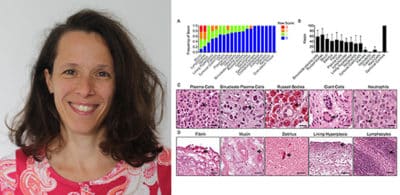Scientists at the New York Genome Center (NYGC), working in collaboration with The Rockefeller University and the Hospital for Special Surgery, have uncovered important genetic patterns that may help clinicians develop optimal pain management and treatment strategies for their arthritis patients.
Study findings, detailed in the paper Machine learning integration of rheumatoid arthritis synovial histology and RNAseq data identifies three disease subtypes, were published in an early-access online edition of Arthritis & Rheumatology last month.
The collaborative team conducted a gene expression study, analyzing joint tissue samples of 123 patients with rheumatoid arthritis from the Hospital for Special Surgery, in New York, as well as six patients with osteoarthritis. Their work included microscopic study of the tissues and deploying such data analysis tools as consensus clustering and support vector machine learning to integrate RNA sequencing data into their tissue analysis data to model and predict disease subtypes. Their study revealed three distinct subtypes: a low inflammatory subtype; a highly inflammatory subtype and a mixed subtype.
All samples in the study were sequenced at the NYGC, and all subsequent computational analyses behind the findings of this paper were performed by the NYGC Bioinformatics team. “Our analyses identified the most impacting tissue features, thereby narrowing the set of features that a pathologist would be required to look at for future samples. The results were compelling,” said Phaedra Agius, a Senior Bioinformatics Scientist at the NYGC, and one of the five equally-contributing lead authors on the study. Other NYGC contributors to the study are Nicolas Robine, PhD, Assistant Director, Computational Biology; Heather Geiger, Senior Bioinformatics Analyst; Mayu Frank, Consultant, Darnell Lab; and NYGC Founding Director Robert Darnell, MD, PhD.
Study findings offer new, clinically actionable insights into arthritis treatment and pain management. “We were surprised to find that some patients had high pain, tenderness and even swollen joint counts while exhibiting minimal inflammation in their tissue or blood. This suggests that some patients can have high disease activity scores with little inflammation,” said lead co-author Dr. Dana Orange, of The Rockefeller University, in publisher Wiley’s press announcement of the study. “It stands to reason that patients with minimal tissue inflammation may not respond to our usual immune-targeting drugs.”
For more on the study, see recent articles in Practical Pain Management,
Rheumatology News and Healio.com.
